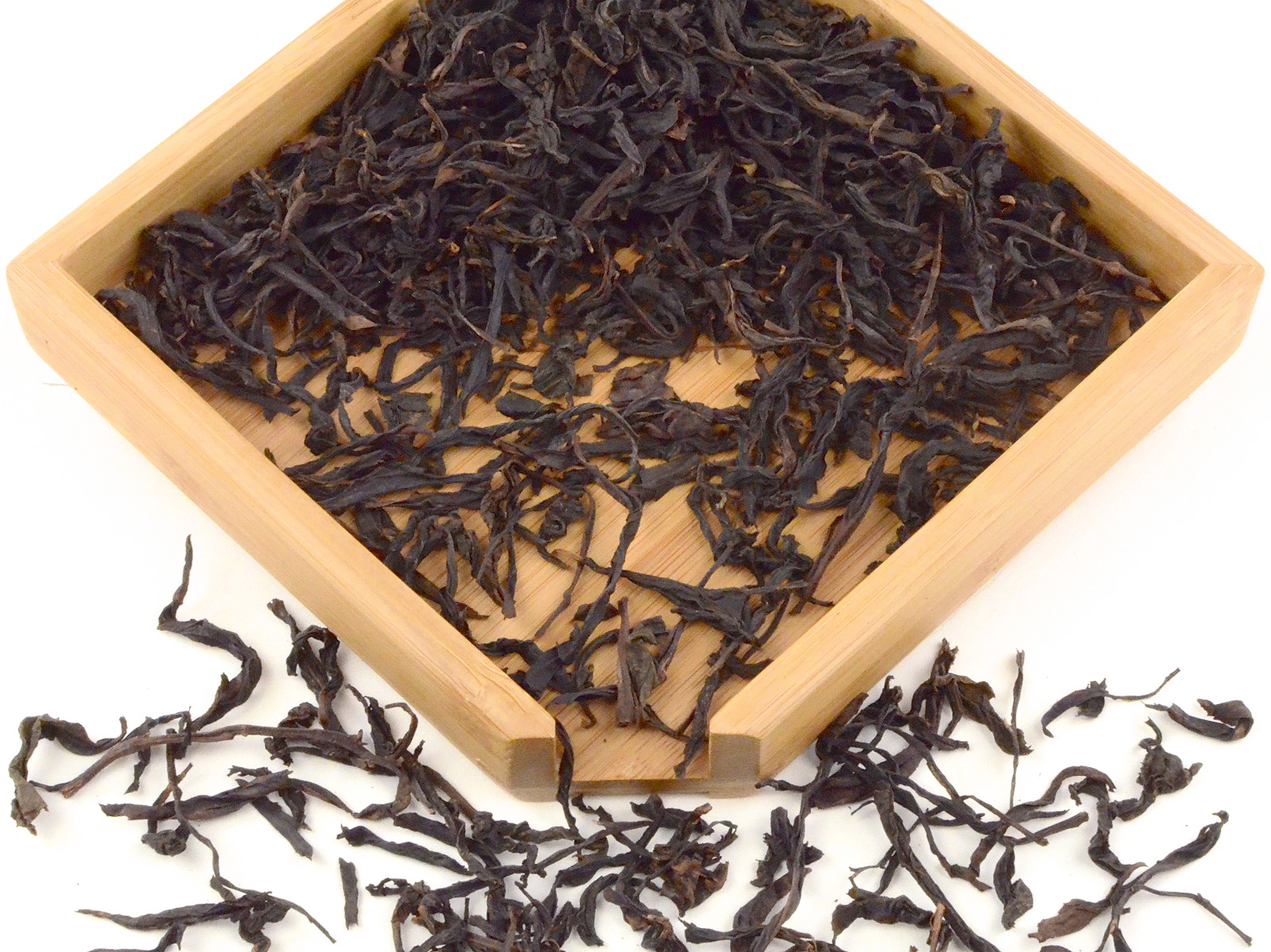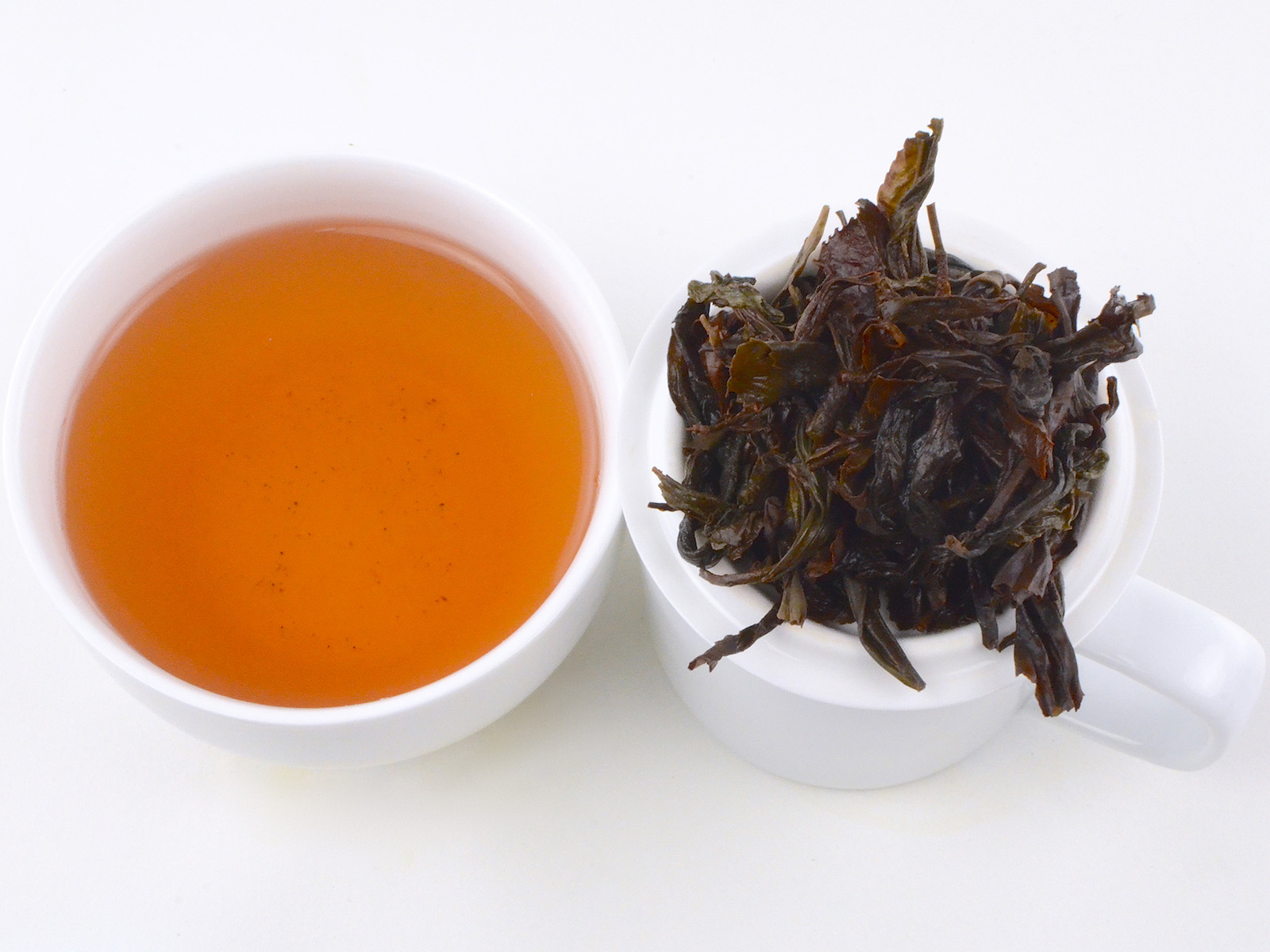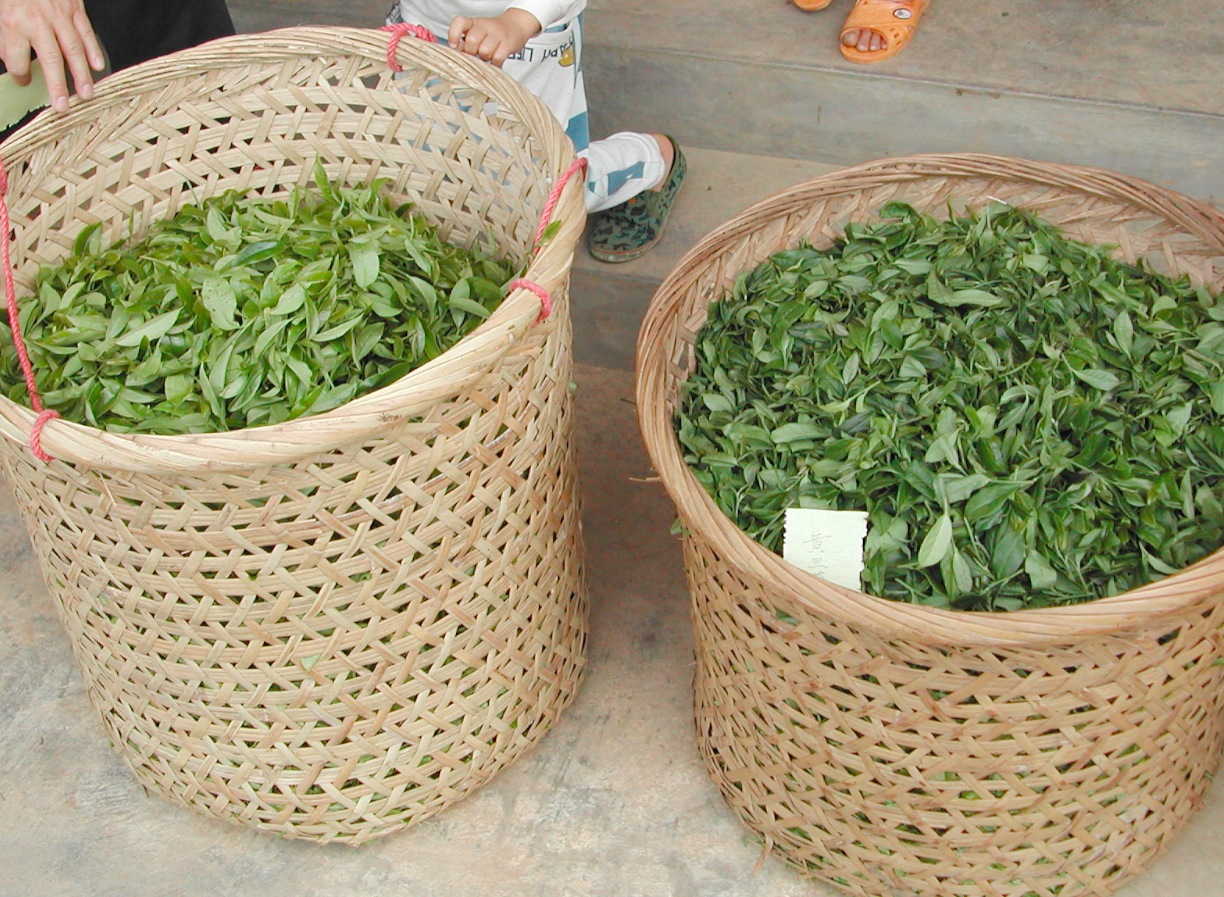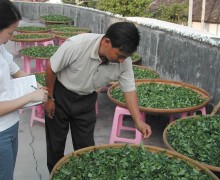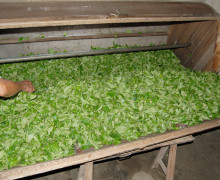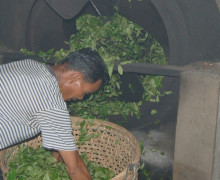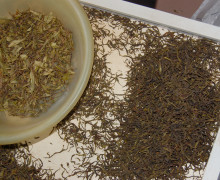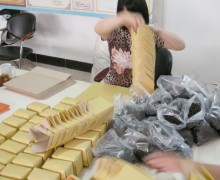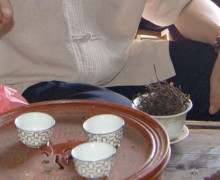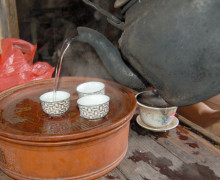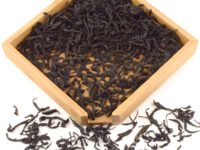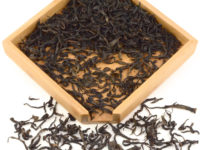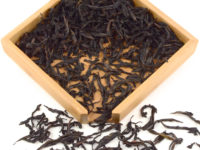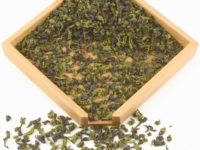Mi Lan Xiang (Snow Orchid)
Dan Cong Wulong Tea 2021
Snow Orchid’s strong oxidation and heavy roasting give it a bold flavor with a lingering floral finish like the winter-blooming orchids of Guangdong Province. A popular everyday wulong with more caffeine for study and alertness. An affordable choice for drinkers seeking a strong and dark brew.
- Tea Origin
- Phoenix Mountain, Chaozhou City, Guangdong Province, China
- Tea Bush
- Mi Lan Xiang (Snow Orchid)
- Tea Maker
- Wu Jianhua and Chen Hongwei
- Harvest Time
- Late April
- Plucking Standard
- Zhong kai mian
Snow Orchid is the most popular Dan Cong tea. Its strong oxidation and heavy roasting allow the special character of this tea to remain stable for at least two years. Appreciate the dry leaves that smell like the local orchids blooming in winter from which this tea is named. After brewing, the clean honey tea color will yield a robust flavor that fills the mouth and leaves a complex lingering aftertaste.
The Chaozhou people, from whom this tea comes, are famous for their rich diet and frequently pair this tea with meals to improve digestion. They will always use about 8 grams or more of tea per serving, but will only brew each infusion for about 1 minute for many subsequent infusions.
Note: This tea was formerly named Xue Lan Xiang.
The Particular Origin of Dan Cong Wulong Teas
Snow Orchid’s origin of Chaozhou in China’s southern Guangdong province is famous for producing Dan Cong wulong tea. The climate here is tropical, bordering on subtropical, and the yellowish-red soil is rich and fertile. According to Chaozhou’s local history, the nearby Phoenix Mountain was first cultivated for tea production over 600 years ago.
The Phoenix Mountain tea region is very large and has many different peaks within it. The tallest peak, Wu Dong Mountain, is where the region’s tea history began. There are still over 4,000 tea bushes here that are over 100 years old. The oldest of these bushes is the mother bush of the Huang Zhi Xiang (Yellow Sprig) variety. The mother bush is six meters tall and is about 600 years old. Old bushes like these have large tree-like trunks and deep root systems and are locally referred to as “half-tree” tea bushes. The tea brewed from their leaves bears resemblance the robust and concentrated quality of old tree Puer tea from Yunnan.
The farmers of the Phoenix Mountains traditionally grew tea by seeds, but like apples, seeds will produce different types of bushes. There are many different varieties of tea bush in Wu Dong Mountain. Tea drinkers describe Dan Cong wulongs from Guangdong Province as possessing ten different aromas. Snow Orchid is the most popular on on the market because of the rich orchid aroma and robust flavor. The strong flavor comes from using young bushes averaging around 25 years of age in order to make this tea.
Harvest and Production
Southern China is warm, so tea is picked earlier here, around early April. They pick the top 3-4 leaves of new growth. The fresh leaves are carried back to the factory to wither under the sunshine for 1-2 hours. After that, they are sent inside the factory and placed inside a large rolling machine. Good quality rolling machines are made of woven bamboo, all run by an electric motor. Lots of people use stainless steel machines, but our tea is made using a bamboo one. They will gently rotate the leaves intermittently over about 2 hours to help them keep withering evenly. They will raise the temperature of the machine to help the oxidation process and shake it more often over the course of 4-6 hours.
The tea master will then take the leaves and fry them at a very hot temperature (above 200°C) for about 10 minutes to kill the enzymes and stop the oxidation process. After the tea is fried, the leaves are soft and can be twisted into their shape. A kneading machine is use to compress and knead the leaves until they are twisted in to their long shape. The leaves will be wet and moist, so they are dried in an oven for about 40 minutes. The mao cha is then finished. They will pack all the mao cha in large bags and wait until the season is over to sort out the sprigs and unfolded leaves. The tea will be roasted one more time and will then be done.
Wulong Producing Regions
Historically, four regions in China were the first to produce wulong tea. These regions were the Wuyi Mountains in north Fujian Province, Anxi City in the center of Fujian Province, Taiwan island across the ocean from Fujian, and in Chaozhou City near the coast between Fujian and Guangdong Provinces. Nowadays there are many tea regions that produce wulong tea, but these four regions were the first. Chaozhou City is famous for producing Dan Cong wulong tea.
The Legend of Phoenix Mountain in Chaozhou City
The namesake of Phoenix Mountain is a legend from the last years of the Song Dynasty. As the legend tells, a young Song Dynasty emperor and his officers were being chased by Mongolians attacking from the north. They were forced to travel for a long time and pass through this mountain range. The emperor was very thirsty, but had no water to drink. A bird flew overhead and dropped tea leaves and seeds into the emperor’s hands. His servant instructed him to chew the leaves to quench his thirst. The emperor did so and was refreshed. He pronounced the tea a treasure sent to him by the legendary phoenix. By this legend, the mountainous region was named in the bird’s honor.
No chemical fertilizer, pesticide, or herbicide was used in the production of this tea. Click here to read more about our promise to fair trade and the environment.

